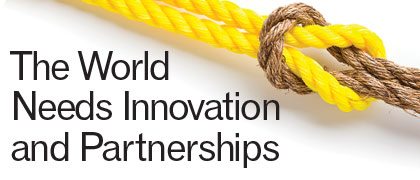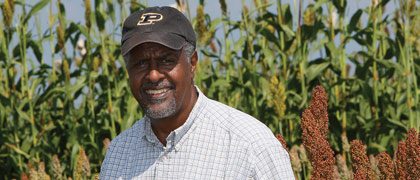Two World Food Prize laureates emphasize areas of need in meeting the grand challenge of feeding 9 billion people by 2050.
This is the challenge, says Phil Nelson, who is the 2007 World Food Prize winner. “It’s in the developing parts of the world where our population is going to increase — the place where we don’t have a lot of resources,” he explains.
Today, more than a billion people subsist on less than a dollar a day and three-quarters of those live in rural areas, according to the World Bank. “They probably fill their stomachs, but it might not be nutritious,” Nelson says. “But with this kind of income, they have no hope. Can you imagine living in a situation where you are bringing children into the world with no hope. So it’s not only feeding them, but helping them to develop technologies and increase their income.”
Nelson, who’s known for revolutionizing the food industry with large-scale storage and transportation of fresh fruit and vegetables using bulk aseptic food processing, is focused on reducing post-harvest losses. “Loss is what happens before it gets to the consumer,” Nelson says. “There are all kinds of losses and it’s really severe – as high as 50 percent. Now you’re producing a crop and we’re going to lose half of it. It just doesn’t make sense.”
Of all the grain produced in Africa, Nelson says 60-70 percent of it’s stored at the farm-level. There are all kinds of losses — physical, quality, fungal infestations and quantitative. In Cambodia, Nelson says a new rice variety doubled production. “But they lost half of it because they had no way to store it,” he says. “In Afghanistan, more than 50 percent of the fruits and vegetables are lost.” According to a 1999 World Bank report, post-harvest losses in India amounted to 12 to 16 metric tonnes of food grain each year, which could feed one-third of India’s poor.
Nelson, a Purdue University professor emeritus, refers to Purdue’s Improved Crop Storage project, which aims to increase the income of farmers in West and Central Africa through the use of plastic grain-storage bags. If 50 percent of cowpea grain at the farm level were put into airtight storage, overall annual income in the region would increase by $255 million.
After seeing this need, Nelson wanted to help smallholder farmers preserve their crop, while enhancing food safety. This led to the development of the International Food Technology Center, which is a food processing-based center designed to link farmers to markets. Today, there are innovation centers in Senegal and Malaysia, where farmers can bring their product and test, clean and package it to sell. “Or it can be more complicated and they can do value-added and make couscous,” Nelson says. “Then an entrepreneur gets started and it has a snowball effect.”
Nelson refers to the old proverb — “Give a man a fish and you feed him today. Teach a man to fish and you feed him for a lifetime.” Nelson likes to say, “Teach a man to preserve a fish and you’ll feed him, his family and his community.”
Known for developing drought and Striga resistant sorghum hybrids, Gebisa Ejeta has enhanced the food supply for millions of people in sub-Saharan Africa.
Unmet Needs of the New Frontier
Gebisa Ejeta, the 2009 World Food Prize winner, says while reducing losses is critical, there are many more factors that come into play in developing nations.
“The 2007-08 food price crisis proved that population growth, lack of employment and poverty are aligned with hunger and political instability,” says Ejeta, a native of Ethiopia. “And that is not good for anyone.”
Ejeta says that Africa needs to recognize, like the nations of the developed world, that it too can meet the grand challenges around food insecurity and low economic growth and development with the power of science and technology.
But he emphasizes that business and trade in the right policy environment must be complementary. “Africa’s economy is growing, its micro-economic policies are improving and foreign investment is flowing in,” he says. “Yet, Africa has not been able to scale up existing scientific technologies to meet the challenges of food security because of the lack of human and institutional capacity and the political will of leadership.”
Ejeta says Africa needs to rapidly build its human capacity, its scientific infrastructure, and its public and private institutions, including the institutions of higher learning, research and engagement, as well as the governments and policy institutions. It needs to invest its own legal resources, as well as aggressively pursue technical assistance from friendly nations.
“The 21st century appears to be about partnerships,” Ejeta says. “And Africa has no choice but to get in the mix with some sense of clarity and engagement. The Western world cannot afford to ignore Africa and its potential. Our greatest competitive advantage is in human capacity and institutional development with our universities and private sector. We are great at enhancing knowledge and building institutions of science, technology and innovation.
“I’m a product of the technical assistance program, with most of my education supported by the United States government. And I know fully well what education and knowledge can do for a person, for a family and a nation.
“Africa needs to turn to the power of education, science, trade and business to address the triad of the continent’s most persistent enemies — illiteracy, hunger and diseases — and commit new attention to growing economic opportunities for its people and to participate in the global economy.
“That’s where we can assist Africa to be competitive, to engage with us and the rest of the world in building a healthier global economy. There is no substitute.”
Julie Deering














